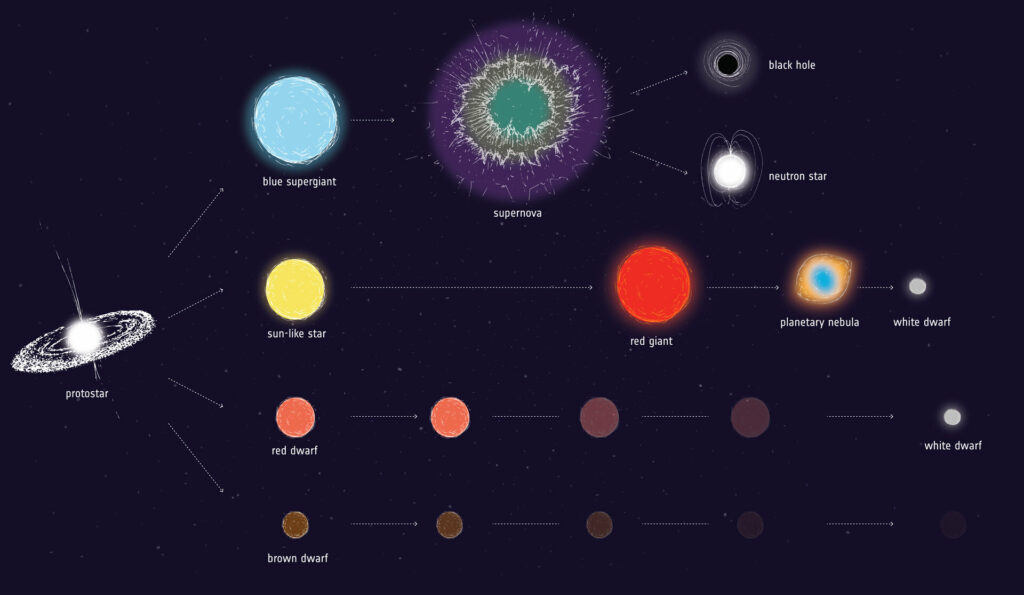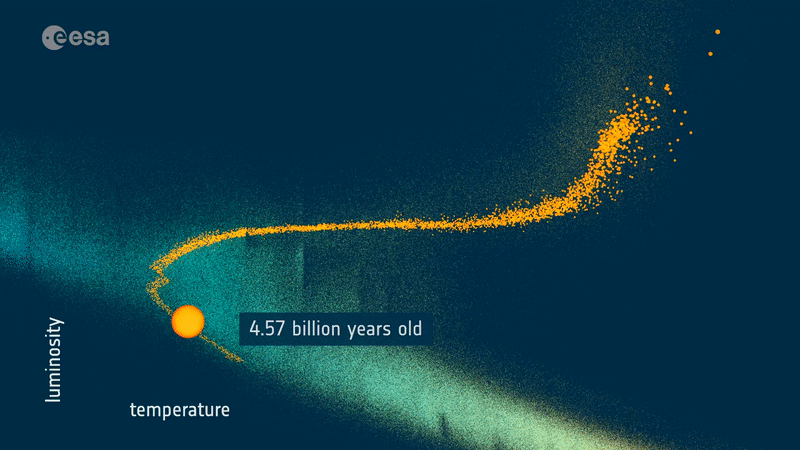Using data collected by the Gaia orbital Observatory, the team of scientists studied many sun-like stars. The purpose of the study was to find an answer to the question of how our sun will evolve and in how many billions of years it will turn into a red giant.
Hertzsprung-Russell-Diagram
On June 13, the third release of Gaia observational data was published. Among other things, it contains information about the size, temperature and mass of hundreds of millions of stars. An international team of astronomers analyzed this archive. Their target was luminaries close in mass and composition to our Sun.

Next, the researchers plotted the selected luminaries on the Hertzsprung-Russell diagram. This is a graph on which the luminosity of stars is measured along the vertical axis, and the observed temperature of their surfaces is measured along the horizontal axis. The luminaries on it are not evenly distributed, but are located in certain areas, which strictly correspond to the stages of their life cycle.
The Hertzsprung-Russell diagram allows tracing the entire life path of a star like our Sun. First, the newborn luminary condenses from a gas-dust cloud and condenses to pressures and temperatures that allow thermonuclear fusion reactions to begin. In the diagram, this corresponds to the beginning of the main sequence — the area where about 90% of all stars are located.

In the future, the sun-like star begins its movement along the main sequence. It begins to produce more energy and the temperature of its shell gradually increases. At some point, the luminary reaches the peak of its temperature. But after the reserves of hydrogen fuel begin to come to an end, the star begins to rapidly increase in size, while the temperature of its surface, on the contrary, decreases. Eventually, the star becomes a red giant or supergiant, going to the upper right corner of the diagram, and then cools down and shrinks to the size of a white dwarf, ending up at the bottom left.
Future of the Sun
Gaia’s data allows making a picture of the future of the Sun. Now its age is 4.57 billion years and our star is in the middle of its life cycle. In the next billions of years, the Sun will gradually emit more and more energy, and its temperature will increase. The temperature maximum will be reached when the Sun is about 8 billion years old.

After that, our luminary will start moving to the right corner of the diagram. When it is 10-11 billion years old, the Sun will dramatically increase in size and turn into a red giant. It will swallow Mercury, Venus and possibly the Earth. Then the inevitable finale will come. The dying star will shed its shell and only the core will remain of it, which will turn into a dim white dwarf.
Follow us on Twitter to get the most interesting space news in time
https://twitter.com/ust_magazine

